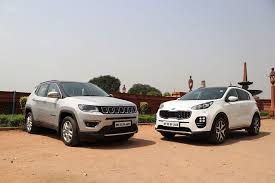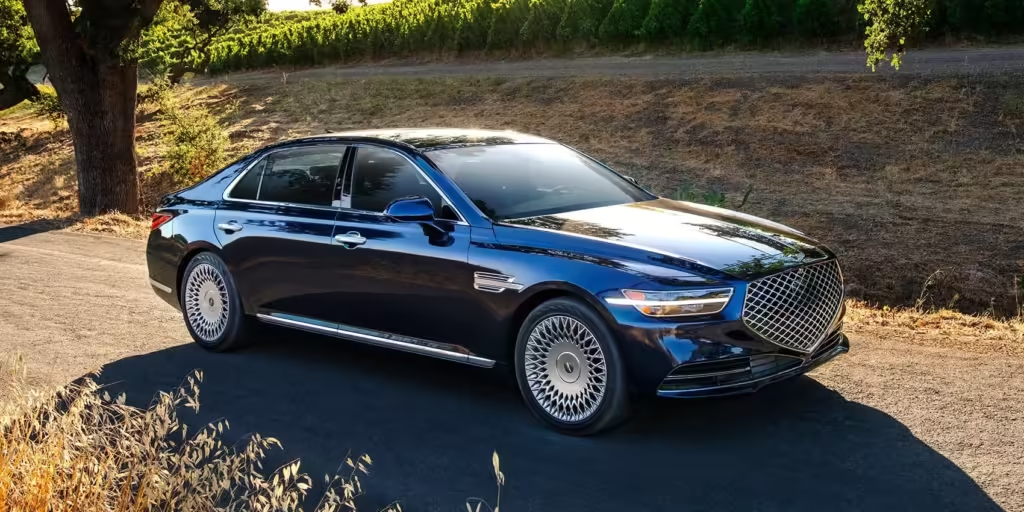
In the global automotive landscape, Korean and American cars have established themselves as major contenders. With brands like Hyundai and Kia from Korea, and Ford, Chevrolet, and Dodge representing the United States, both nations offer a wide range of vehicles for different markets. However, consumers often compare these cars based on essential factors like reliability, performance, comfort, and more. Here’s a detailed analysis of how Korean cars stack up against American cars across key attributes.
1. Reliability
Korean Cars:
Korean car manufacturers, particularly Hyundai and Kia, have earned a reputation for producing highly reliable vehicles in recent years. J.D. Power’s Vehicle Dependability Studies consistently rank these brands among the top. In the early 2000s, Hyundai and Kia faced some quality concerns, but through aggressive investment in research and development, they have significantly improved. They now offer long warranties (commonly 5-10 years), which boosts consumer confidence in their reliability.
Korean brands tend to focus on building durable powertrains, with fewer complex features that might introduce mechanical issues. This balance of technology and durability has earned them top spots in reliability rankings.
American Cars:
American cars, historically, have had a more mixed reputation in terms of reliability. Some brands, like Ford and Chevrolet, have produced dependable models over the years (Ford F-150, Chevrolet Silverado), but they also have a history of models plagued by mechanical issues. In the 1990s and early 2000s, American manufacturers suffered from quality-control issues, leading to declining sales.
However, brands like Ford and GM have made strides in improving their reliability. Ford has revitalized its lineup with more robust and durable engines, while GM has focused on improving its trucks and SUVs. However, certain models, especially in the American muscle and luxury segments, still lag behind in reliability rankings compared to Korean cars.
2. Performance
Korean Cars:
In the past, performance wasn’t a major selling point for Korean vehicles, which were primarily marketed as affordable and fuel-efficient. However, in recent years, brands like Hyundai and Kia have begun to compete more directly in the performance sector. Models like the Hyundai Veloster N and Kia Stinger have proven that Korean automakers can produce cars with serious horsepower and handling characteristics.
Korean performance cars typically emphasize a balance between power and practicality. While they may not match the raw performance of American muscle cars, they offer refined handling, turbocharged engines, and good power-to-weight ratios, making them more accessible for everyday use. In terms of fuel efficiency, Korean cars generally outshine American counterparts due to smaller engines and a focus on hybrid and electric technology.
American Cars:
American automakers are renowned for their performance-oriented vehicles, particularly muscle cars. Ford’s Mustang, Chevrolet’s Camaro, and Dodge’s Challenger epitomize raw power and speed, often boasting V8 engines with high horsepower. American car manufacturers emphasize acceleration and torque, which gives their cars a distinctive edge in terms of straight-line speed.
However, this focus on power can sometimes come at the expense of handling and fuel efficiency, with larger engines consuming more fuel and adding weight. American trucks and SUVs, while also powerful, prioritize towing and off-road capabilities over nimble performance.
3. Comfort
Korean Cars:
Korean automakers have placed a significant focus on comfort in recent years, especially in their newer luxury-oriented models like the Genesis (Hyundai’s luxury brand) and higher-end Kia vehicles. These models feature plush interiors, advanced infotainment systems, and high-quality materials that rival German and Japanese brands in terms of comfort.
Korean cars are often praised for their spaciousness and quiet cabins, offering well-designed interiors with ample legroom and storage. Many models also come equipped with features like heated seats, wireless charging, and panoramic sunroofs, which enhance the overall driving experience. Additionally, Korean brands have improved their suspension systems, making their vehicles smoother on rough roads.
American Cars:
American vehicles have traditionally been known for their large and comfortable interiors, particularly in trucks and SUVs. Brands like Cadillac and Lincoln have long catered to the luxury market with top-of-the-line comfort features. Ford’s SUVs, like the Expedition, and full-sized pickups, like the F-150, are designed for comfort on long road trips, offering spacious interiors, high-quality leather seats, and premium infotainment systems.
However, American sedans and smaller cars may not always provide the same level of comfort as their Korean counterparts. The focus on size and power in the American market sometimes leads to less refinement in smaller vehicle segments. That said, American automakers are making significant strides in producing more comfortable and luxurious interiors, particularly with high-end models.
4. Technology and Features
Korean Cars:
Korean brands have invested heavily in integrating advanced technology into their vehicles. Hyundai and Kia models come equipped with a wide range of features like adaptive cruise control, lane-keeping assist, smartphone connectivity (Android Auto, Apple CarPlay), and even driver assistance systems at affordable price points. Their infotainment systems are known for being intuitive and user-friendly.
Moreover, Hyundai and Kia are also leading the charge in electric vehicle (EV) development, with models like the Hyundai Ioniq 5 and Kia EV6 offering advanced EV technology at competitive prices.
American Cars:
American cars, especially those from Ford and GM, have caught up in terms of technology. Many modern American vehicles feature cutting-edge driver assistance systems, large touchscreen infotainment systems, and premium audio setups. However, these features tend to be more prevalent in the higher trim levels, while base models might not be as well-equipped compared to their Korean counterparts.
One area where American cars excel is in infotainment and connectivity. Ford’s SYNC system, for instance, is highly regarded for its ease of use and extensive features.
5. Affordability
Korean Cars:
One of the biggest advantages of Korean cars is affordability. Hyundai and Kia consistently offer vehicles with a lower starting price than their American rivals, without sacrificing too much on quality. This value-for-money proposition has helped them capture a significant portion of the global market.
Korean automakers also tend to offer more features at lower prices, making their vehicles appealing to budget-conscious consumers who still want the latest technology and safety features.
American Cars:
American cars, particularly trucks and SUVs, often come with higher starting prices due to their size and power. While American brands offer affordable sedans and compact cars, their emphasis on larger vehicles and performance models can make them less budget-friendly. However, American automakers do provide a wide range of price points, from economy cars to luxury vehicles, giving consumers more options based on their needs.
6. Resale Value
Korean Cars:
Historically, Korean cars didn’t have the best resale value, but this has changed significantly over the past decade. Hyundai and Kia’s improvements in quality, reliability, and design have helped boost their vehicles’ resale value. However, they still tend to depreciate faster than American or Japanese cars, especially in the luxury segment.
American Cars:
American cars, especially trucks and SUVs, tend to hold their value relatively well, particularly models like the Ford F-150 and Chevrolet Silverado. Muscle cars also maintain strong resale value due to their performance-oriented niche. However, American sedans and smaller vehicles generally experience faster depreciation.
Conclusion
In the ongoing comparison between Korean and American cars, each has its strengths and weaknesses:
- Reliability: Korean cars generally have the edge, especially with brands like Hyundai and Kia consistently ranking high in dependability.
- Performance: American cars, particularly muscle cars and trucks, excel in raw power, but Korean brands are catching up with balanced, practical performance.
- Comfort: Both Korean and American cars offer comfort, but Korean brands lead in the economy and mid-tier segments, while American cars dominate the luxury and large SUV markets.
- Technology: Korean brands offer more advanced tech at lower price points, though American brands are rapidly closing the gap.
- Affordability: Korean cars are more affordable overall, providing excellent value for money.
- Resale Value: American trucks and performance cars hold their value better, but Korean cars have improved significantly in this area.
Ultimately, the choice between Korean and American cars depends on individual needs, preferences, and budget. Both countries offer highly competitive models that cater to a variety of drivers.
